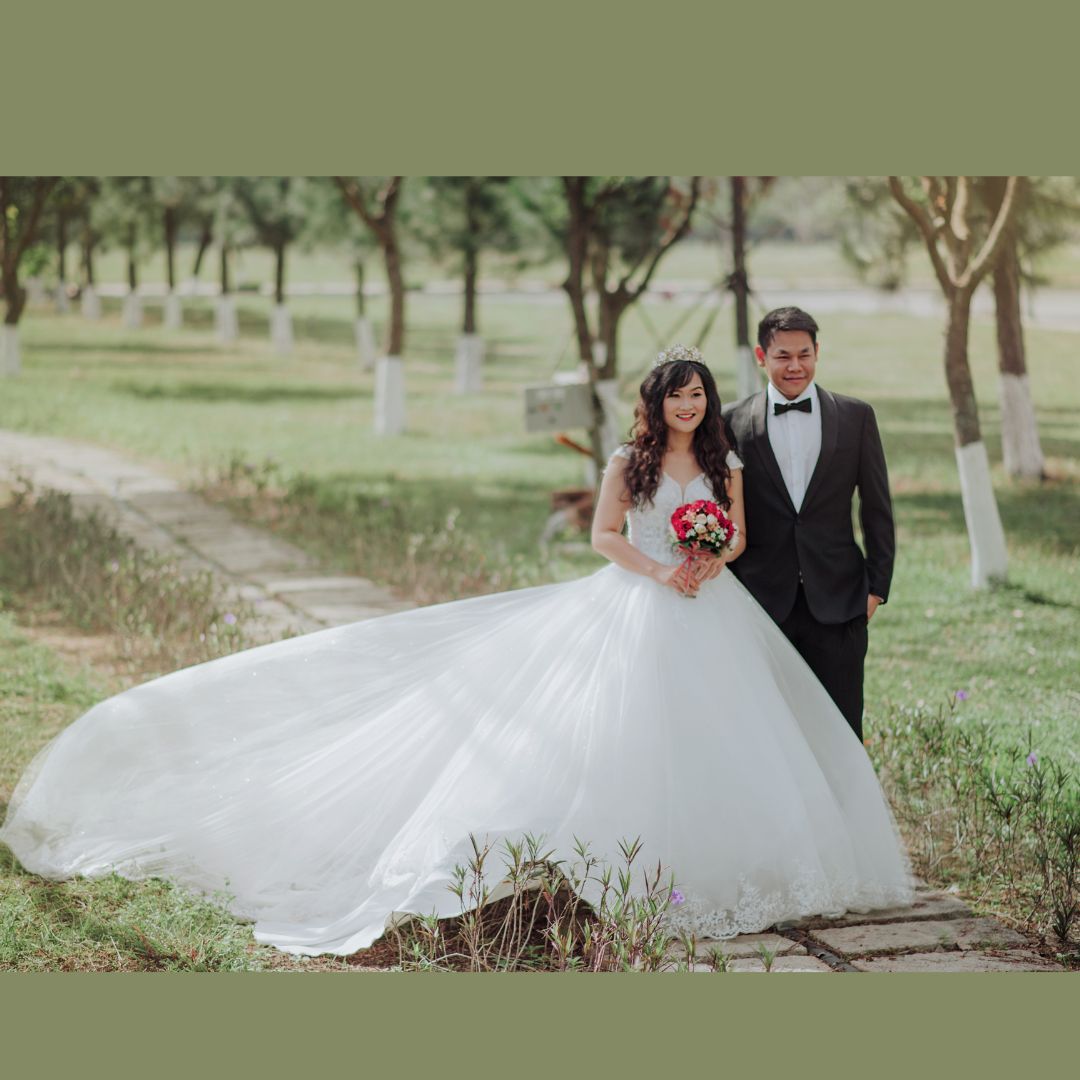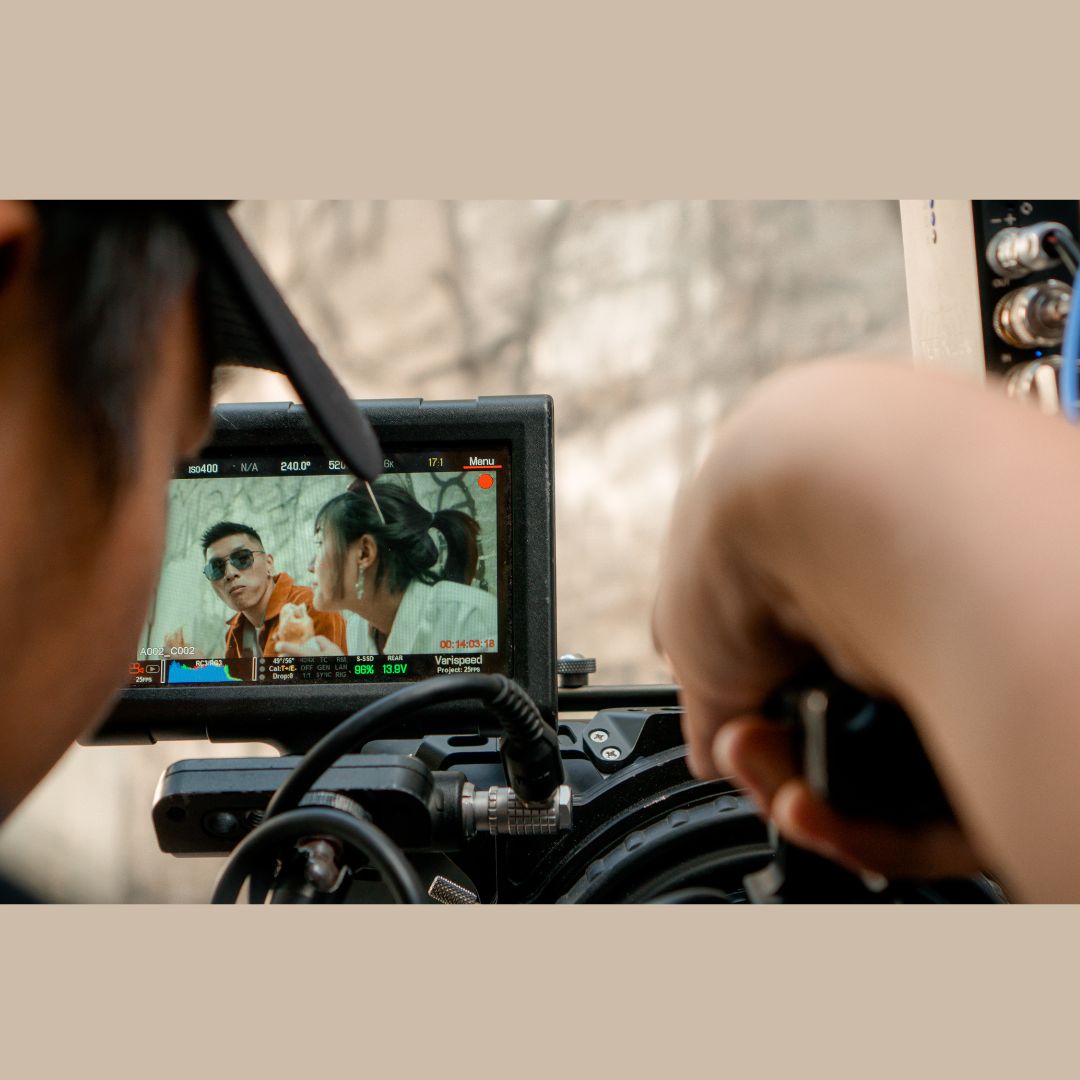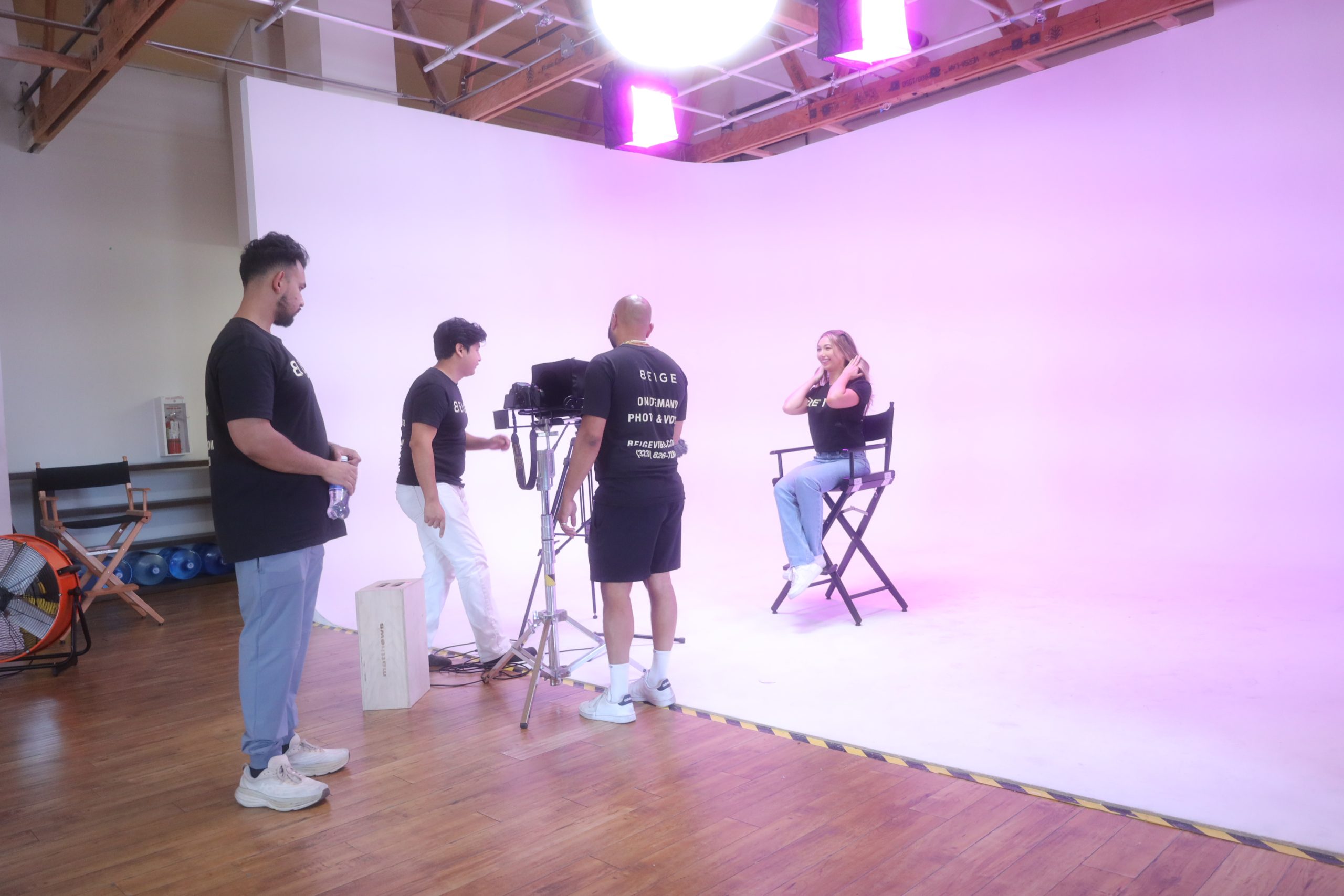Portrait photography is a captivating art form that allows photographers to capture the essence and personality of their subjects. Whether you’re a professional or an amateur photographer, there are techniques and tips that can help you make your subject shine in portrait photography. With the right approach and equipment, you can create stunning and impactful portraits that truly captivate the viewer.
To start with, let’s explore the art of portrait photography and the essential equipment needed for this genre. Selecting the right camera and lens combination is crucial in capturing sharp and detailed portraits. Lighting equipment is essential to control the lighting conditions and create the desired mood. Tripods and other accessories can also aid in providing stability and ease of use during the shoot.
Once you have your equipment ready, it’s important to consider the setting of your portraits. Choosing the right location can add depth and character to your images, while selecting an appropriate background can create a visually pleasing and complementary backdrop for your subject.
Posing and directing your subject properly is another key aspect of portrait photography. Effective communication with your subject helps to establish a comfortable and relaxed environment, allowing their true personality to shine through. Posing techniques and tips can help you create flattering compositions, while directing expressions and emotions can bring life and depth to the portraits.
Mastering lighting techniques is crucial for creating captivating portraits. Understanding the difference between natural and artificial light, as well as the quality and direction of light, allows you to sculpt and shape the overall look and feel of the image. Reflectors and diffusers can be used to manipulate and control the light for desired effects.
Composition and framing play a significant role in creating visually compelling portraits. Utilizing techniques such as the rule of thirds and leading lines helps to create a balanced and visually appealing composition. Balancing the elements within the frame and utilizing depth of field can also add depth and interest to your portraits.
Post-processing and editing are the final steps in enhancing your portraits. Basic adjustments and enhancements can be made to improve the overall look and feel of the image. Retouching and skin correction techniques can help to refine the subject’s appearance. adding creative effects can add a unique and artistic touch to your portraits.
By following these tips and techniques, you can elevate your portrait photography skills and capture captivating and memorable images of your subjects. So grab your camera, find the perfect location, and let your subject shine in every portrait you capture.
The Art of Portrait Photography
To master the art of portrait photography, utilize these essential techniques to capture the essence and personality of your subjects.
- Composition: Mindfully frame your subjects to create visually captivating images.
- Lighting: Experiment with natural light or use artificial lighting to add depth and dimension.
- Pose and expression: Guide your subjects to convey genuine emotions and showcase their unique characteristics.
- Background: Choose a backdrop that complements your subject and enhances the overall composition.
- Edit and retouch: Enhance your portraits using editing software to refine the final image.
In the early 19th century, the art of portrait photography gained popularity as people sought to capture and document their loved ones. Renowned photographers like Julia Margaret Cameron and Yousuf Karsh perfected the art, immortalizing individuals through their lens, leaving a lasting legacy for future generations.
Essential Equipment for Portrait Photography
Whether you’re a seasoned photographer or just starting out, having the right equipment is essential to capture awe-inspiring portraits. In this section, we dive into the world of portrait photography gear. From choosing the perfect camera and lens combination to mastering the art of lighting and selecting the necessary accessories, we’ll explore the tools that will make your subject truly shine in every shot. So, gear up and get ready to elevate your portrait photography game to new heights!
1. Camera and Lens Selection
When it comes to capturing stunning portrait photographs, it is crucial to choose the right camera and lens.
- One important factor to consider is the type of camera. Depending on your preferences and shooting style, you may need to decide between a DSLR or mirrorless camera.
- Choosing a suitable lens is also essential. Prime lenses with wide apertures, such as the 50mm f/1.8, are ideal for portraits. They provide beautiful bokeh and sharpness.
- Focal length is another aspect to think about. You should determine the focal length based on your preferred composition. Telephoto lenses, like the 85mm or 135mm, are popular choices for flattering portraits.
- Image stabilization is worth looking for in a camera or lens. It can help reduce camera shake and produce sharper images, especially in low-light conditions.
- Lastly, make sure to review lens compatibility. Ensure that the chosen lens is compatible with your camera brand and mount.
2. Lighting Equipment
Having the right lighting equipment is crucial for portrait photography, as it greatly enhances your images. Consider these essential options:
- 1. Camera and Lens Selection: Choose a camera with good low-light performance and a lens suitable for portrait photography.
- 2. Lighting Kit: Invest in a lighting kit that includes strobe lights or continuous lights, light stands, modifiers like softboxes or umbrellas, and a reflector.
- 3. Light Meter: A light meter helps you measure and control the intensity of light in your scene.
- 4. Light Diffusers and Reflectors: Light diffusers help soften harsh light, and reflectors bounce light back onto your subject for added fill.
- 5. Flash Trigger: A wireless flash trigger allows you to remotely trigger your off-camera flashes.
With the right lighting equipment, you can manipulate light to create beautiful and well-lit portraits that make your subject shine.
3. Tripod and Other Accessories
When it comes to portrait photography, having the right tripod and accessories can greatly enhance your shooting experience and the quality of your photos.
- Tripod: Invest in a sturdy tripod to keep your camera steady and prevent blurriness, especially in low-light situations.
- Remote Shutter Release: This accessory allows you to remotely trigger the camera, minimizing camera shake and ensuring sharp images.
- Lighting Accessories: Consider using reflectors or diffusers to control and manipulate light, creating the desired mood and eliminating harsh shadows.
- Additional Lenses: Expand your creative options by investing in lenses suitable for portrait photography, such as a prime lens for beautiful bokeh or a telephoto lens for capturing distant subjects.
- Backdrop and Props: Use backdrops and props to add visual interest and personalize your portraits.
Fact: Using a tripod not only helps stabilize your camera but also encourages slower, deliberate movement, resulting in more thoughtful composition and better image quality.
Setting the Stage: Location and Background
The right location and background can make all the difference when it comes to capturing stunning portraits. In this section, we’ll dive into the art of setting the stage for your subjects to shine. Discover how selecting the perfect location and choosing an appropriate background can elevate your portrait photography to new heights. Get ready to unlock the secrets behind creating captivating compositions that accentuate your subject’s beauty and showcase their personality. Let’s dive in and bring your portraits to life!
1. Choosing the Right Location
When it comes to portrait photography, it is crucial to select the perfect location for capturing stunning images. There are several factors that should be taken into account while choosing a location:
- Lighting: It is important to find areas abundant in natural light, such as open shade or diffused light. It is advisable to avoid harsh sunlight as it can result in unflattering shadows.
- Background: The background plays a significant role in complementing the subject and adding visual interest to the photograph. Elements like texture, color, and patterns should be considered while making a choice.
- Context: The location should enhance the narrative or reflect the subject’s personality, thereby contributing to the story that you want to convey through the portrait.
- Accessibility: It is necessary to ensure that the chosen location is easily accessible for you, your subject, and any equipment that may be required.
- Privacy: If required, it is advisable to search for a location that offers privacy, allowing the subject to feel comfortable and relaxed during the photoshoot.
By thoughtfully considering these factors, you will be able to select the ideal location for your portrait photography, successfully capturing the essence of your subject.
2. Selecting an Appropriate Background
- When selecting an appropriate background for portrait photography, it is important to consider the subject’s style and personality. This will help in choosing a background that complements their character.
- One should also take into account the purpose of the portrait – whether it is for a formal setting or a fun, casual atmosphere.
- Additionally, it is essential to consider the color scheme of the background and how it will harmonize with the subject’s clothing and features. Opting for a contrasting background can make the subject stand out.
- Moreover, one should think about the location options – whether it is indoors or outdoors – and look for available backdrops that align with the desired aesthetic.
- Lastly, it is crucial to evaluate the lighting conditions in the chosen location and how they will affect both the background and the appearance of the subject.
By carefully considering these steps for selecting an appropriate background, you can enhance the overall composition and bring out the best in your portrait photography.
Posing and Directing Your Subject
When it comes to portrait photography, one of the key factors that can make your subject truly shine is how you pose and direct them. In this section, we will uncover the secrets behind effectively communicating with your subject, explore various posing techniques and tips, and learn how to skillfully direct expressions and emotions. Get ready to unlock the power of compelling and captivating portraits as we dive into the art of posing and directing your subject.
1. Communicating with Your Subject
- Establish a comfortable and collaborative environment in portrait photography by effectively communicating with your subject.
- Make your subject feel at ease by introducing yourself and building rapport with them.
- Ensure both parties are aligned by discussing the goals and vision for the photoshoot.
- Boost your subject’s confidence by explaining the posing techniques and providing clear instructions.
- Throughout the session, offer positive feedback and encouragement to enhance their confidence.
- Promote a collaborative process by being open to feedback and suggestions from your subject.
- Convey any specific emotions or expressions you want to capture by communicating clearly and effectively.
- Maintain a friendly and professional demeanor throughout the shoot, and take breaks when needed.
2. Posing Techniques and Tips
- Communicate with your subject: Establish a rapport and make them feel comfortable. Clearly explain what you want to achieve and give them direction.
- Use Posing Techniques and Tips: Guide your subject into poses that highlight their best features and showcase their personality.
- Encourage natural expressions: Help your subject relax and capture genuine emotions by engaging them in conversation or asking them to recall a happy memory.
- Consider body angles: Experiment with different angles to find the most flattering pose, such as shooting from above or below.
- Use props or prompts: Incorporate props or give your subject a specific action or expression to evoke emotion or create a dynamic composition.
Remember, practice and experimentation are key to finding your unique style and creating memorable portraits.
3. Directing Expressions and Emotions
Directing expressions and emotions is a crucial skill in the realm of portrait photography, enabling you to authentically capture the essence of your subject. To perfect this technique, take into consideration the following pointers:
By adeptly directing expressions and emotions, you can produce captivating and impactful portraits that truly shine.
Mastering Lighting Techniques for Portraits
Mastering lighting techniques is essential to make your portrait subjects shine. In this section, we’ll unravel the secrets behind using natural and artificial light effectively. We’ll also explore the impact of light quality and direction on your portraits, along with the ingenious use of reflectors and diffusers. Get ready to elevate your photography game as we delve into the art of lighting for portraits.
1. Natural Light vs. Artificial Light
When it comes to portrait photography, the choice between natural light and artificial light can significantly impact the outcome of your photos. Here are some important points to consider:
- Natural Light: Utilizing natural light can produce a soft and organic look. Experiment with different times of day and the direction of the light to achieve the desired mood. Avoid harsh midday sunlight and consider using reflectors or diffusers to control the lighting.
- Artificial Light: Incorporating artificial light sources like studio lights or flash offers more control over the lighting conditions. This allows you to create a specific atmosphere and highlight specific features. Experiment with different lighting setups and modifiers to achieve the desired effects.
- Hybrid Approach: Combining natural and artificial light can result in a unique and balanced look. Use natural light as the main source and supplement with artificial light to add depth and control shadows.
Consider the style and mood you wish to convey in your portraits, and select the lighting method that best aligns with your vision and the needs of your subject.
2. Understanding Light Quality and Direction
Understanding light quality and direction is essential in the realm of portrait photography. This understanding is crucial for creating the desired mood, accentuating prominent features, and effectively managing shadows.
Photographers must consider a few key aspects, which include:
| 1. Natural vs. artificial light: | It is paramount to experiment with both types of light sources to comprehend their impact on skin tones and the overall ambiance of the photograph. |
|---|---|
| 2. Light quality: | Soft light is known to produce gentle shadows and create a smooth appearance on the subject’s skin. Conversely, harsh light generates sharp shadows, which in turn enhances textures and adds a different dimension to the photograph. |
| 3. Direction of light: | The direction of light is a crucial factor to consider. Front lighting evenly illuminates the subject without any shadows, while side lighting adds depth and dimension to the image. Backlighting, on the other hand, results in creating a halo effect or silhouette on the subject. |
By mastering the concepts of light quality and direction, photographers can attain captivating portraits that successfully convey the desired emotions and effectively highlight the uniqueness of the subject.
3. Using Reflectors and Diffusers
- Using Reflectors and Diffusers is a fantastic method to enhance your portrait photography by manipulating light and achieving the desired lighting effects. Here are some steps to effectively incorporate reflectors and diffusers:
- Position the reflector or diffuser: Place the reflector or diffuser in a position that allows it to bounce or diffuse light onto your subject.
- Adjust the angle: Angle the reflector or diffuser to control the direction and intensity of light.
- Experiment with distance: Move the reflector or diffuser closer or farther from your subject to achieve the desired lighting effect.
- Use natural light: Use the reflector to bounce sunlight onto your subject, filling in shadows and creating a more evenly lit portrait.
- Diffuse harsh light: Use the diffuser to soften and scatter light, reducing harsh shadows and creating a more flattering lighting effect.
By Using Reflectors and Diffusers effectively, you can add dimension, control lighting, and achieve stunning portraits. Experiment with different techniques and see how they can transform your images. Remember to adjust the position and angle of the reflector or diffuser to suit your subject and desired effect.
Composition and Framing
When it comes to portrait photography, one key aspect that can truly make your subject shine is the composition and framing. In this section, we’ll dive into the art of crafting visually appealing portraits by exploring sub-sections such as using the rule of thirds and leading lines, finding a balance among the elements in your frame, and utilizing depth of field. Get ready to enhance your photography skills and capture stunning portraits that leave a lasting impression.
1. Rule of Thirds and Leading Lines
When it comes to portrait photography, understanding the Rule of Thirds and Leading Lines is crucial for creating captivating and visually pleasing compositions.
- Rule of Thirds: Divide your frame into nine equal parts with two horizontal and two vertical lines. Position your subject or key elements along these lines or at their intersections to achieve equilibrium and create visual interest.
- Leading Lines: Look for natural or man-made lines that direct the viewer’s eye towards the subject. These lines can be roads, fences, or even the direction in which the subject is looking. They enhance depth and inject a dynamic element into the composition.
By incorporating these techniques effectively, you can enhance your portrait photography and bring out the best in your subjects.
2. Balancing the Elements in the Frame
When it comes to balancing the elements in the frame for portrait photography, there are a few key considerations to keep in mind.
- Composition: Use the rule of thirds to create balance and interest by placing your subject slightly off-center.
- Foreground and Background: Pay attention to the elements in the foreground and background to ensure they complement your subject without distracting from them.
- Color and Contrast: Use colors and contrasts strategically to create balance and draw attention to your subject.
- Positive and Negative Space: Utilize both positive (subject) and negative (empty) space to create a harmonious composition.
- Size and Proportion: Consider the size and proportion of the elements within the frame to create a balanced visual hierarchy.
Remember, achieving balance in portrait photography is an art, and practicing these techniques will help you create visually captivating images.
3. Utilizing Depth of Field
To effectively utilize depth of field in portrait photography, follow these steps:
-
Understand the concept: Depth of field refers to the area of the photograph that appears in sharp focus. It is controlled by the aperture setting and the distance between the subject and the camera.
-
Choose the right aperture: A wider aperture (smaller f-number) creates a shallow depth of field, blurring the background and keeping the subject in focus. A narrow aperture (larger f-number) increases the depth of field, keeping both the subject and background in focus.
-
Consider the distance: Utilizing depth of field effectively involves experimenting with different distances to achieve the desired effect. The closer the subject is to the camera, the shallower the depth of field will be.
-
Focal length matters: Longer focal lengths, such as a telephoto lens, enable you to utilize depth of field more effectively by creating a narrower depth of field compared to wider angles like a wide-angle lens.
-
Focus on the subject’s eyes: Utilizing depth of field creatively involves ensuring that the subject’s eyes, being the focal point of a portrait, are in sharp focus.
By following these steps, you can effectively utilize depth of field to enhance your portrait photography and make your subject stand out.
Basic Adjustments and Enhancements
- To enhance your portrait photography, basic adjustments and enhancements are essential. Here are some steps to follow:
- Adjust exposure: Fine-tune the brightness and contrast to ensure proper lighting.
- Enhance colors: Increase or decrease saturation and vibrancy for a more impactful image.
- Sharpen details: Apply sharpening techniques to bring out the fine textures and details in your subject.
- Reduce noise: Use noise reduction tools to minimize grain and distractions.
- Smooth skin tones: Soften skin imperfections while maintaining a natural look.
- Crop and straighten: Crop the image to improve composition and straighten any tilted angles.
Pro-tip: Remember to always work on a duplicate of your original image to preserve the integrity of your original file.
Retouching and Skin Correction
Retouching and skin correction are essential steps in portrait photography to improve the appearance of the subject. Here is a step-by-step guide for effective retouching and skin correction:
- Begin by importing the image into editing software such as Adobe Photoshop.
- Utilize the spot healing brush tool to address any blemishes or imperfections on the skin.
- Smooth out the skin using the clone stamp or healing brush tool.
- Adjust skin tones and colors by employing selective color adjustments.
- Eradicate any undesirable shadows or discoloration utilizing the dodge and burn tools.
- Enhance skin texture and details through the use of the high pass filter or frequency separation technique.
- Apply subtle skin smoothing techniques using a soft brush or blur tool.
- Finally, sharpen the overall image and make any final adjustments to attain a polished look.
Fact: A study conducted by Adobe reveals that 65% of professional photographers incorporate retouching techniques for skin correction in their portrait photography workflow.
Adding Creative Effects
To enhance your portraits and add a touch of creativity, you can incorporate various effects during post-processing. Here are some steps to follow to incorporate creative effects into your portraits:
To make your subject shine in portrait photography, you can follow these helpful tips from Portrait Photography: Tips to Make Your Subject Shine.
- Step 1: Start by adding creative effects to adjust the tone and color of the image, creating a desired mood.
- Step 2: Experiment with different filters or presets to infuse your portraits with a unique look.
- Step 3: Utilize selective editing tools to focus on specific areas and make them stand out, adding creative effects.
- Step 4: Explore the addition of textures or overlays to impart depth and visual interest to your portraits.
- Step 5: Consider the inclusion of creative effects like vignettes, light leaks, or bokeh, effectively creating a dreamy or dramatic atmosphere.
- Step 6: Embrace experimentation and play with various effects to discover your own signature style.
By incorporating creative effects into your portraits, you can infuse them with an artistic flair, making them truly unique. Remember, the key is to enhance the essence of your subject and capture their personality in a visually appealing way.
Frequently Asked Questions
1. How can I make my subject feel comfortable during a portrait session?
To make your subject feel comfortable, take the time to communicate with them before the shoot. Discuss ideas, build a connection, and explain what you have in mind. Encourage them to express their preferences and collaborate on poses. Creating a relaxed environment will help them feel at ease and produce great results.
2. What should I consider when choosing a location for a portrait shoot?
When selecting a location, think about the style of photography you want to achieve. Shooting outdoors in natural light can provide beautiful results, but be mindful of changing lighting conditions and weather challenges. Indoors allows for more control over lighting arrangements. Consider the ambiance, backdrop options, and the subject’s preferences.
3. How can I capture authentic and natural moments in my portraits?
To capture genuine emotions and expressions, encourage your subject to be themselves and feel at ease. Take candid portrait photos by creating a relaxed atmosphere and engaging in conversation. Instead of asking for a stiff smile, try to evoke emotions through genuine interactions and spontaneous moments.
4. What are some posing tips for capturing flattering portraits?
Experiment with different poses and angles to find the most flattering options for your subject. Let them stand or lean in a way that feels comfortable for them. You can also demonstrate specific poses or show example images for inspiration. Encourage collaboration and ask for their input on how they would naturally pose.
5. What are some important camera settings for portrait photography?
When it comes to camera settings, consider the style of photography you want to achieve. Pay attention to the shutter speed to avoid motion blur. Experiment with different aperture settings to control the depth of field. Additionally, make sure to focus on the subject’s eyes to create a captivating and sharp image.
6. How can I create a unique and artistic portrait?
To break free from traditional portrait photography, consider experimenting with different techniques and compositions. Play with unconventional angles, use creative lighting techniques, and explore unique backdrops. Incorporate elements that showcase the subject’s personality and style. Don’t be afraid to break the rules to create a one-of-a-kind and emotive portrait.






